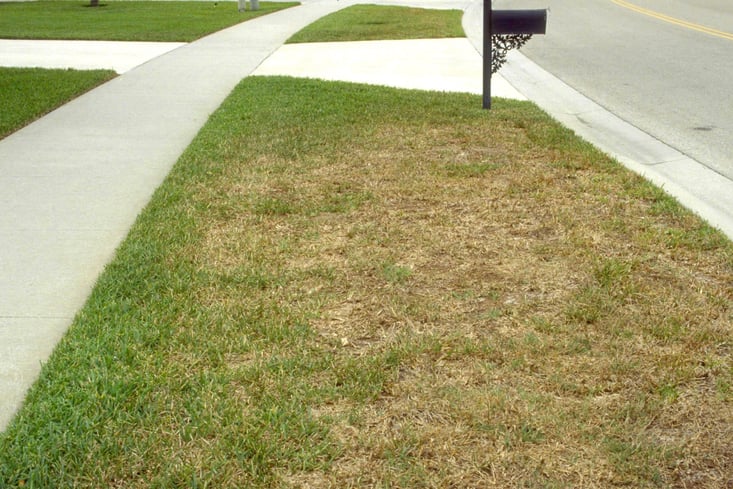
Ottawa business owners have enough to worry about without adding lawn pests to the list. Unfortunately, Ottawa often falls prey to an awful infestation of hairy chinch bugs during the summer months, and commercial properties aren't exempt from the attack. Protect your lawn from these vicious little bugs early with pesticide treatments from the lawn care and commercial sprinkler system experts at Nutri-Lawn.
How to Tell if Your Lawn is in a Hairy Situation
Hairy chinch bugs are extremely small (about 5 millimetres in length) with six reddish legs. A fully grown hairy chinch bug has a black body and white wings. Immature hairy chinch bugs are bright red with distinct white bands across their backs. If you happen to inspect a hairy chinch bug up close, be careful! Hairy chinch bugs have piercing mouthparts that they use to feed on the sap of grass plants.
If you suspect your lawn might be suffering from a hairy chinch bug infestation the lawn care and commercial sprinkler system experts at Nutri-Lawn recommend performing this quick test:
- Cut off the ends of a coffee can.
- Push the can halfway down into the lawn. Wear gloves to protect your hands!
- Fill the can with water and wait for a few minutes. If your lawn is housing hairy chinch bugs, they'll float to the top of the can.
The commercial inground sprinkler system installers at Nutri-Lawn recommend that you check your lawn regularly using this test. Hairy chinch bugs are most likely to make an appearance in hot, dry weather. These sneaky little pests like to hide at the base of grass blades, at soil level, and thrive in areas that are poorly watered.
Tips for Managing Hairy Chinch Bugs
Chinch bugs prefer poorly tended lawns, especially those with dry, compacted soil. A lack of moisture can also lead to a hairy chinch bug problem, so make sure you keep your commercial inground sprinkler system properly scheduled. Proper lawn maintenance will discourage the pests from spreading and will help improve the tolerance of your lawn from other insect invaders. Some helpful lawn care practices include:
- Planting an insect-resistant, endophytic variety of fescue or rye grass. Endophytes are a naturally occurring fungi that will help protect your lawn against a variety of pests.
- Aerating your lawn in the spring. This will help prevent your lawn from compacting later in the summer and will help improve your lawn's ability to retain water.
- Be careful not to over-fertilize. Too much fertilizer will encourage greater insect activity. The commercial inground sprinkler system installers at Nutri-Lawn also recommend using a water-insoluble or slow-release nitrogen-rich fertilizer.
- Water your lawn thoroughly with a commercial sprinkler system. Your lawn should be moist to a depth of 6 to 8 centimetres following each application.
- Keep your lawn cut to a reasonable length (between 6 and 7.5 centimetres). This will help protect your grass from unnecessary sun and heat stress.
Treat at the First Signs of Damage
Hairy chinch bug damage appears as irregular yellow patches on your lawn. Most of the damage will be visible in open, sunny areas, and could be mistaken for drought damage. Treatments should be applied in August.
For more help with your hairy chinch bug situation, call (613) 739-3399 and ask for a free consultation from one of Nutri-Lawn's lawn care experts.






